Excerpts from Jim Conrad's
Naturalist Newsletter
from the May 1, 2016 Newsletter with notes from a visit to Lacanja Chansayab in the Lacandon Reserve; elevation 200m (650ft), N16.604°, W90.917°; Chiapas, MÉXICO
STAR BEGONIA
On the sides of weedy roadcuts around the Lacandon village of Lacanja Chansay in Chiapas's Lacandon Reserve, weeds grow that you'd never see in the much more arid northern Yucatan Peninsula. One such rain-loving plant is shown below in a picture taken this April 13th:
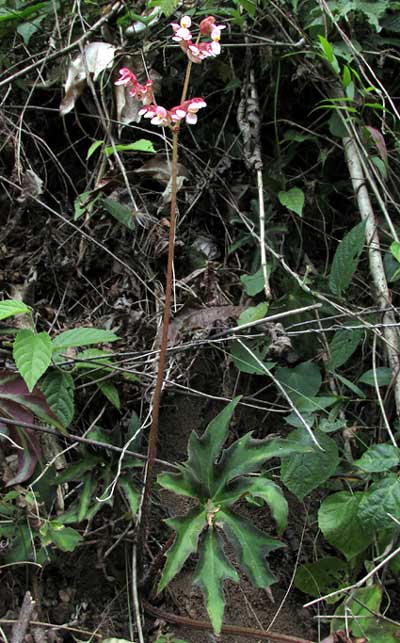
With those pinkish flowers in panicles atop a long, leafless, succulent stem, or peduncle, and lopsided leaves issuing from the peduncle's base, anyone familiar with the North's favorite potted plants will recognize this as a begonia, genus Begonia.
As begonias go, this species' big, asymmetrical, deeply lobed leaves are unusual, and distinctive. A close-up of one is shown below:
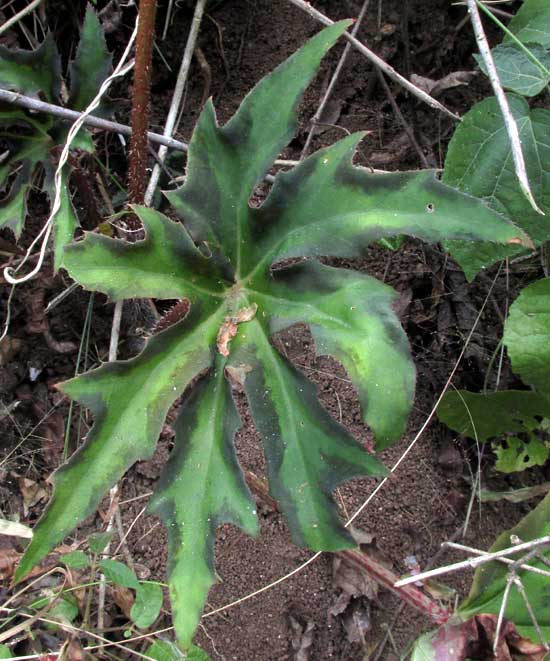
Begonias flowers are unisexual, with both sexes found on each individual plant, so begonias are "monoecious." Below, you can see a male blossom consisting of two rounded, pinkish-white petals subtending a cluster of yellow stamens:
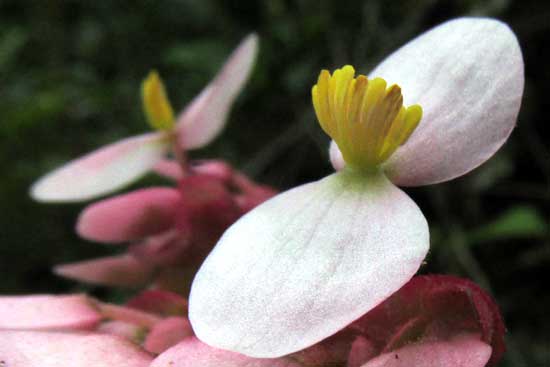
Our begonia keeps from pollinating itself by having its female flowers mature at a different time from its male ones. Our plant's female flowers had already shed their petals and were bearing immature fruits on slender stipes, each fruit with one of its three wings much larger than the other two, as shown below:
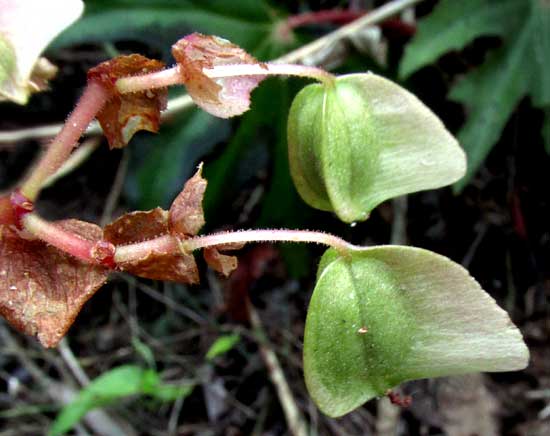
Where the panicles branched, unusually large, conspicuous, rosy-colored bracts arose, looking like a woman's painted fingernails, as shown below:
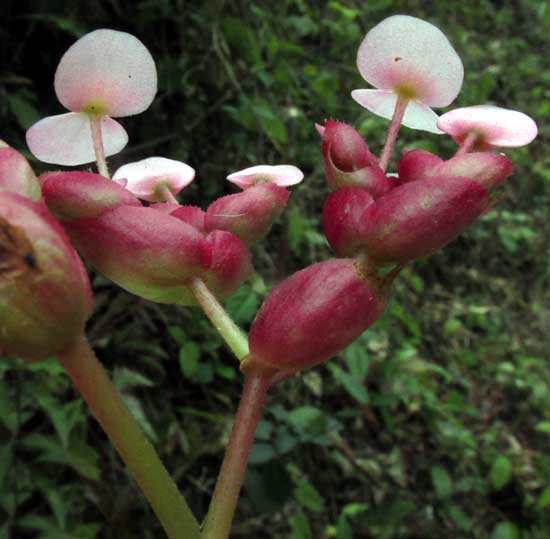
With the genus Begonia holding over 1,600 recognized species, it's considered the sixth-largest genus of all flowering plants -- of all angiosperms. However, with such distinctive features, our Lacandon Begonia was easy to identify as BEGONIA HERACLEIFOLIA, at least in older literature sometimes known as the Star Begonia, because of its leaf shape. Star Begonia is native to southern Mexico and parts of Central America.
Star Begonia is an ancestor of many important begonia cultivars commercially grown today. Among potted begonia cultivars, because of complex histories of hybridization and other horticultural tricks, many cultivars can't be recognized as having any particular wild begonia species as an ancestor. Many of those cultivars have some or a lot of our Star Begonia's genes in them. Probably one reason Star Begonias are chosen for hybridization with other species is that they are so robust, their flowering peduncles reportedly sometimes reaching 12 feet high (3.7m). Ours stood only about waist high.
The American Begonia Society's page on the species, addressing members who might want to collect seeds, advises that "...pollination is tricky as male pollen must be saved to use on the females which appear well after all the males have fallen off the cluster."
This observation is in conflict with our wild plant, which bore immature fruit at the same time it had male flowers. My guess is that Chiapas's wild plants may enjoy more than one flowering/fruiting season a year.
The Begonia Society's page also says that "All varieties of B. heracleifolia have a rest period that seems independent of any season or calendar.